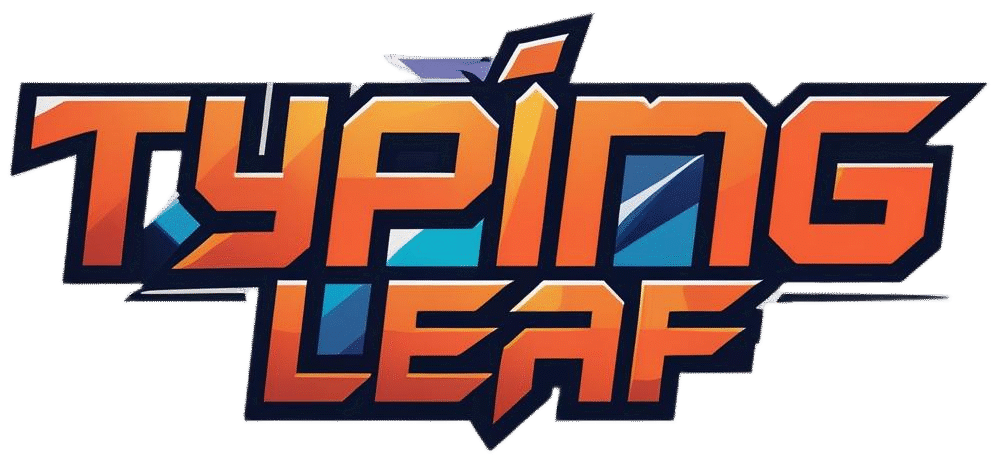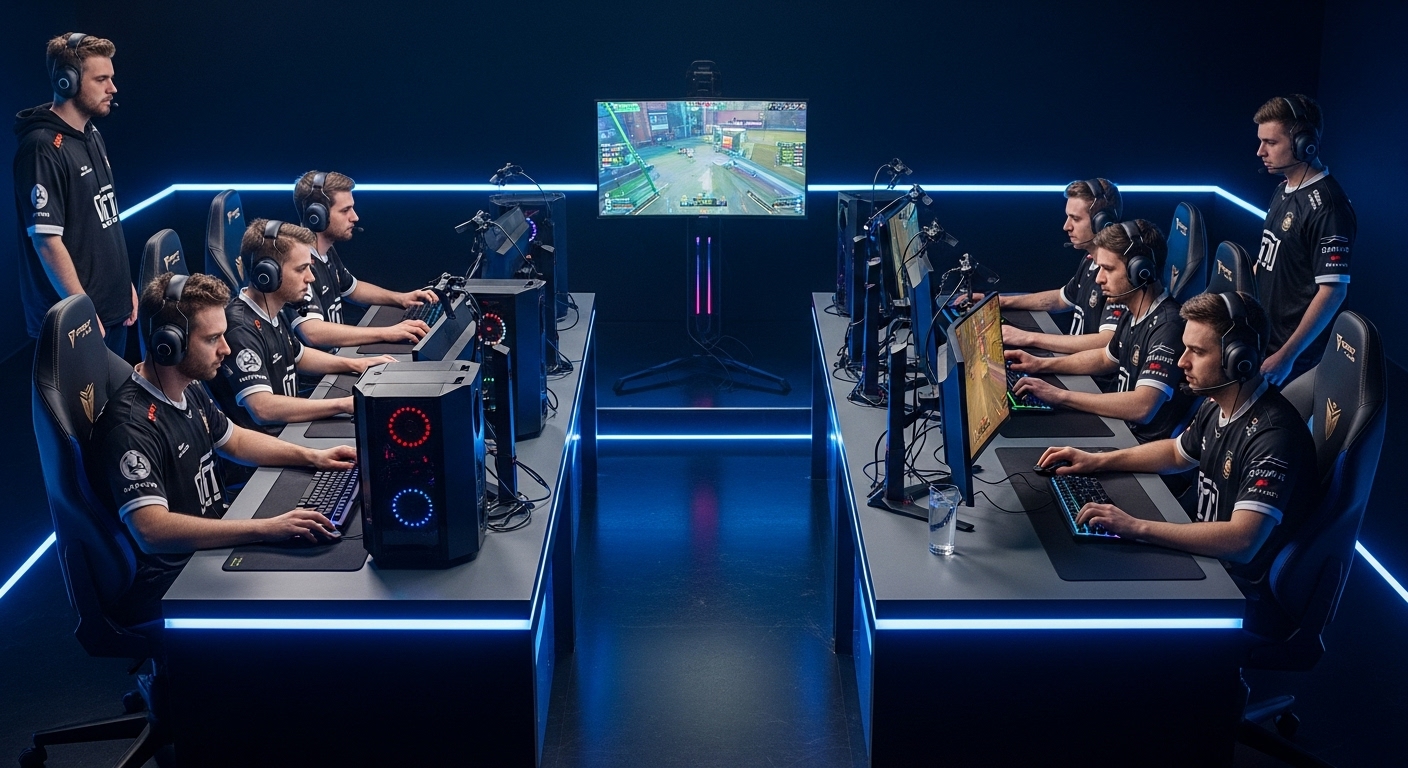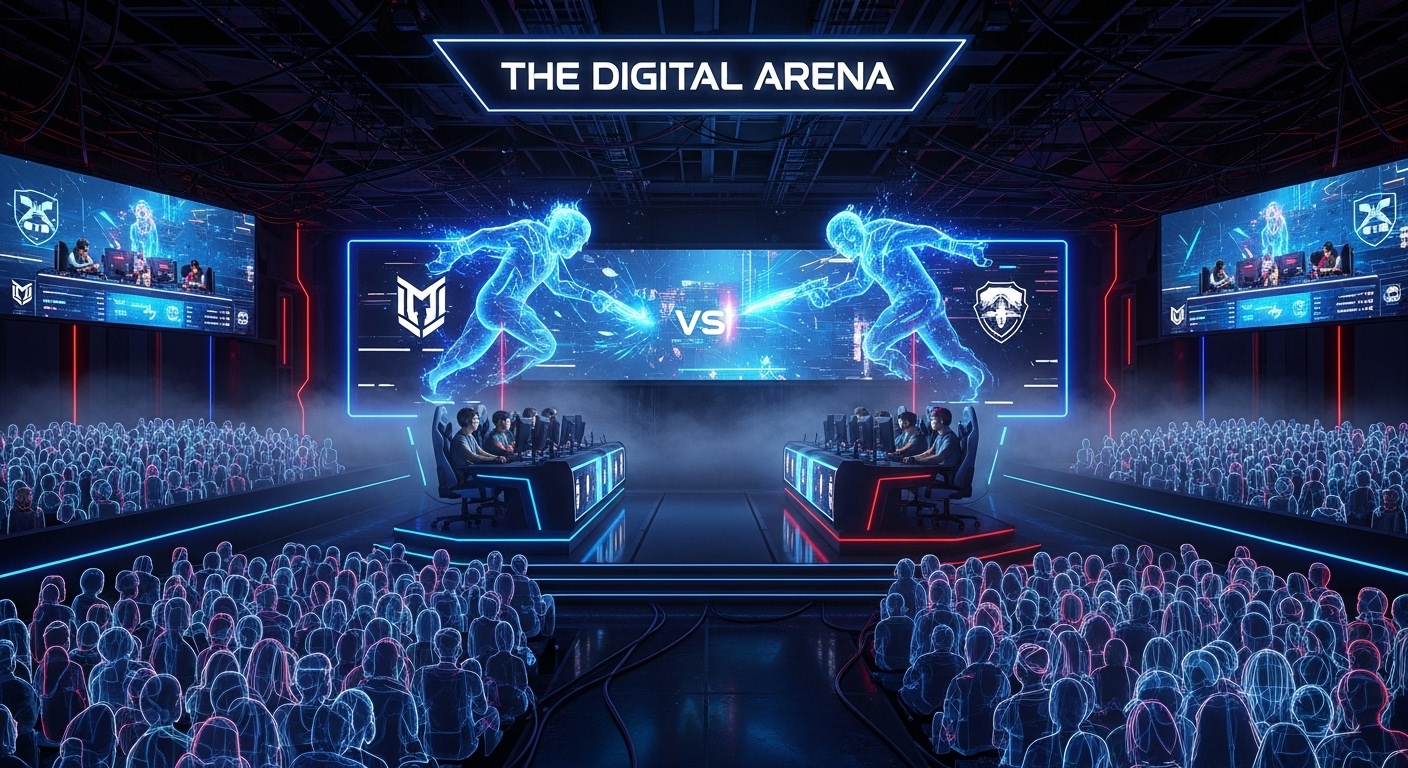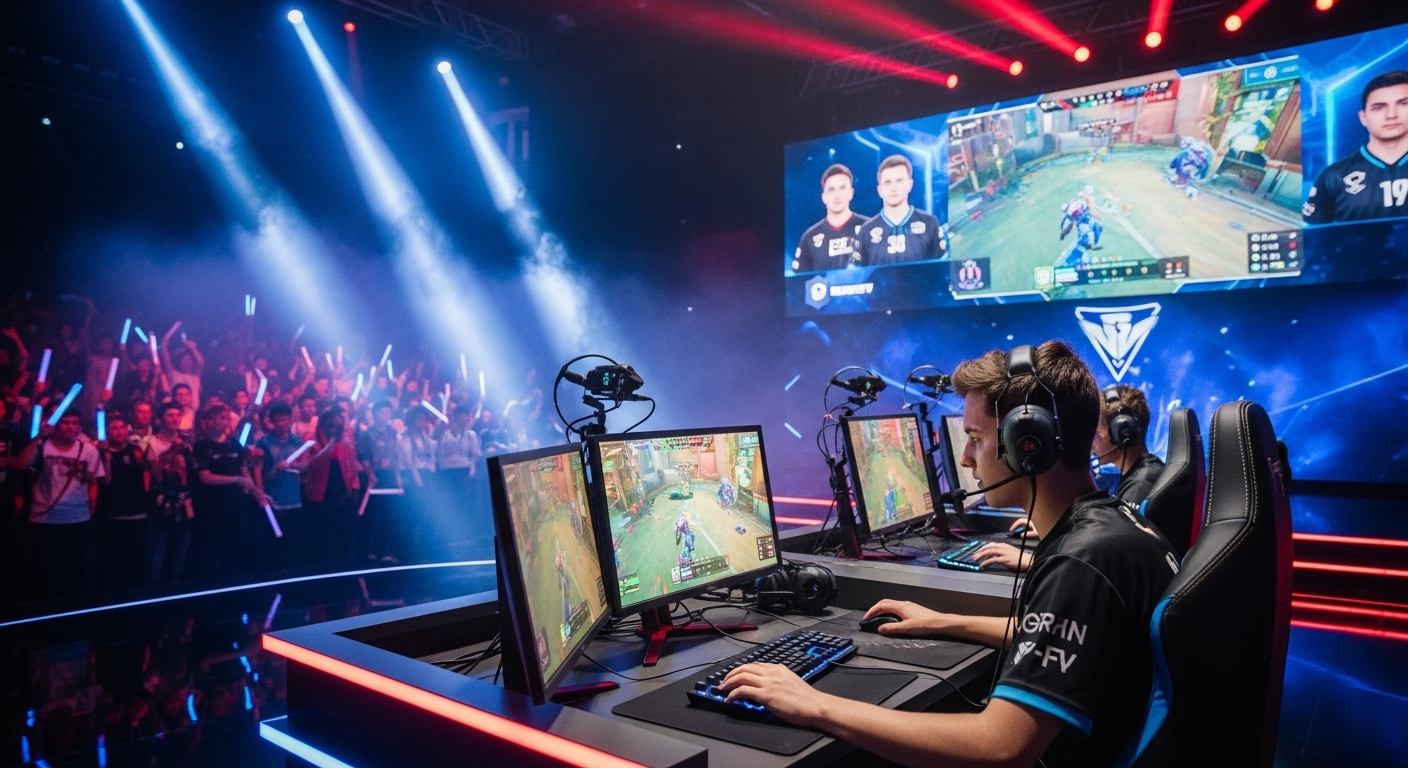Introduction: The Digital Arena Takes the Stage
Esports, short for electronic sports, has evolved from a niche hobby into one of the most influential industries in modern entertainment. What began as small gatherings of gamers competing for bragging rights has turned into a global phenomenon drawing millions of viewers, lucrative sponsorships, and professional athletes earning six-figure salaries. The digital world, once considered a playground for casual gamers, has become a thriving ecosystem of competition, creativity, and culture.
In the early 2000s, very few could have predicted that playing video games would one day fill stadiums and command audiences rivaling those of traditional sports. But today, Esports is not just a pastime — it’s a career, a spectator sport, and a global community. Its rise reflects how technology and human passion intertwine to create new forms of entertainment and expression.
The Origins: From Arcades to Online Arenas
The roots of Esports can be traced back to the late 20th century, when arcade machines and early home consoles began to capture the imagination of young players. Titles like Space Invaders and Pac-Man inspired the first organized gaming competitions in the 1980s, often hosted in arcades or small local venues. These events were modest, but they planted the seeds for a much larger movement.
As technology progressed, so did the scope of competition. The 1990s brought networked PCs and the internet, giving rise to multiplayer experiences like Quake, StarCraft, and Counter-Strike. These games laid the foundation for modern Esports by introducing real-time strategy, precision shooting, and tactical teamwork. The introduction of LAN tournaments — where players connected their computers locally — became the precursor to global tournaments streamed to millions today.
The first major moment for Esports came with the StarCraft explosion in South Korea. The country embraced competitive gaming with such enthusiasm that professional players were treated like celebrities. Televised matches, sponsorships, and training houses established an infrastructure that would later be replicated worldwide. South Korea’s early adoption made it the epicenter of Esports, influencing how organizations, tournaments, and player careers developed.
The 2000s: Building the Foundation of a Global Industry
The early 2000s marked the dawn of modern Esports. The introduction of broadband internet and improved hardware allowed players from around the world to compete in real time. Major tournaments like the World Cyber Games and Electronic Sports World Cup began to attract international attention, giving players and fans a sense of belonging to a new global community.
During this decade, key franchises emerged as Esports staples. Counter-Strike 1.6, Warcraft III, Halo 2, and Dota became competitive standards. The rise of professional teams and sponsors transformed what was once a hobby into a legitimate career path. Though the prize pools were smaller than today’s multimillion-dollar events, the early players established the discipline, dedication, and strategy that define Esports athletes now.
This was also the era when online streaming started to take shape. Before platforms like Twitch, enthusiasts relied on downloadable replays and forums to discuss matches. Communities formed around these games, sharing tactics, commentary, and player highlights. This sense of digital connection fueled the passion that would later ignite the Esports explosion of the 2010s.
The Esports Boom: Streaming, Sponsorships, and Stardom
The 2010s can be described as Esports’ golden decade. This was when everything changed — audience reach, financial growth, and cultural recognition. A key catalyst was the rise of live streaming platforms that allowed fans to watch games in real time from anywhere in the world. Twitch, YouTube Gaming, and other streaming services turned gaming into a spectator sport accessible to anyone with an internet connection.
This accessibility revolutionized how people engaged with Esports. Viewers could now follow their favorite players, learn new strategies, and participate in the community. It wasn’t just about competition anymore — it became entertainment. Professional gamers became influencers, blending performance with personality to build loyal fanbases.
Game developers recognized this opportunity and began designing titles specifically for competitive play. League of Legends, Dota 2, and Overwatch were engineered with Esports in mind, offering balanced mechanics, team-based gameplay, and continuous updates. These games built structured leagues and seasonal championships, creating the same kind of anticipation found in traditional sports.
Sponsors and investors followed. Major brands, from energy drinks to automobile manufacturers, began backing Esports teams and events. Prize pools skyrocketed — The International 2019 for Dota 2 awarded over $34 million, making it one of the richest tournaments in competitive history. Stadiums filled with roaring fans, and millions more tuned in online. Esports had officially entered the mainstream.
The Players: From Casual Gamers to Global Athletes
What separates Esports professionals from casual players isn’t just skill — it’s dedication, training, and mental discipline. Top-tier players often practice for ten to twelve hours a day, studying opponents, refining mechanics, and coordinating with teammates. Their routines mirror those of traditional athletes, combining physical health, strategic thinking, and teamwork.
These players also carry the weight of massive online audiences and brand expectations. With millions of followers, they’re not just competitors but public figures. Their influence extends beyond gaming — into fashion, music, and social media culture. Some players retire early due to burnout or injury, which has sparked discussions about mental health and career longevity in Esports.
The evolution of coaching, analytics, and sports psychology has elevated Esports professionalism even further. Teams now employ analysts to break down gameplay data, dietitians to optimize health, and psychologists to strengthen focus and resilience. What was once considered “just gaming” has matured into a multifaceted discipline blending performance science and technology.
The Spectators: A New Generation of Fans
The rise of Esports has created a new kind of fandom — one that thrives online and crosses geographical boundaries. Fans can interact directly with players through social media, participate in live chats during matches, and even contribute financially through digital support systems. This level of interactivity is something traditional sports are still striving to match.
Younger audiences, particularly those in their teens and twenties, see Esports as their primary entertainment. The appeal lies not just in the games but in the personalities, stories, and drama surrounding the competitions. Teams have rivalries, players have redemption arcs, and underdogs can rise to fame overnight. These narratives, combined with the immediacy of live streaming, make Esports a dynamic form of storytelling.
Large-scale events such as League of Legends Worlds, Overwatch League Finals, and Valorant Champions Tour have drawn millions of viewers online and packed arenas worldwide. These spectacles blur the line between gaming and entertainment, featuring elaborate stage designs, musical performances, and cinematic storytelling. It’s a digital carnival that speaks the language of a connected generation.
The Business of Esports: Beyond the Screen
Esports is more than just competition; it’s an industry with multiple revenue streams. Beyond tournament winnings, the ecosystem includes sponsorships, advertising, merchandise, digital goods, and media rights. Game publishers often act as both organizers and beneficiaries, controlling league structures and broadcast deals.
Franchised leagues like the Overwatch League and Call of Duty League introduced a model similar to traditional sports, where teams buy into a system for a fixed fee and share revenues. This structure attracted investment from sports franchises, celebrities, and corporations eager to tap into Esports’ youthful audience. Teams became brands, selling jerseys, hosting events, and building dedicated fan experiences.
However, with rapid growth came challenges. Financial sustainability remains a hot topic as not all organizations are profitable. Player contracts, intellectual property rights, and revenue distribution are areas still evolving. Yet, despite growing pains, the business side of Esports continues to expand, with forecasts predicting billions in global revenue in the coming years.
Education and Esports: The Classroom Meets the Console
A surprising but welcome development in recent years has been the integration of Esports into education. Universities around the world now offer scholarships for competitive gamers, similar to those given to athletes in traditional sports. These programs promote teamwork, leadership, and critical thinking — skills that extend far beyond gaming.
High schools have also adopted Esports as extracurricular activities, fostering inclusivity among students who might not engage in physical sports. This approach recognizes gaming as a legitimate form of competition and learning. It also opens doors for careers in game design, broadcasting, marketing, and event management, bridging the gap between play and profession.
Technology’s Role: Shaping the Future of Competition
Technology has been both the foundation and the fuel of Esports. From high-performance hardware to advanced streaming technology, innovation drives the industry forward. Cloud gaming, 5G networks, and artificial intelligence are reshaping how games are played, broadcasted, and analyzed.
Virtual reality (VR) and augmented reality (AR) are emerging as potential frontiers. Imagine watching an Esports match where you can step into the arena using a VR headset or analyze plays from a player’s perspective. These innovations promise to make Esports even more immersive and interactive, pushing the boundaries of what spectatorship can mean.
Artificial intelligence is also revolutionizing training. AI systems can simulate opponents, analyze gameplay for weaknesses, and generate predictive strategies. This data-driven approach enhances player development and team tactics, ensuring competition remains fierce and evolving.
Esports and Culture: Redefining Entertainment
Esports doesn’t exist in isolation — it’s deeply intertwined with music, fashion, and pop culture. Collaborations between Esports teams and global brands showcase how gaming has transcended its digital roots. From luxury clothing lines to music performances at major tournaments, Esports has become a cultural melting pot that influences and reflects modern youth identity.
Celebrities and musicians often appear at events or invest in teams, further legitimizing the space. The crossover between gaming and mainstream media has created hybrid experiences that appeal to both gamers and non-gamers alike. It’s no longer unusual to see a hip-hop artist performing at an Esports championship or a famous actor streaming gameplay to millions.
Challenges: Growing Pains of a Young Industry
While Esports has achieved remarkable success, it faces real challenges. Player burnout, financial instability, and diversity issues continue to be areas of concern. The fast-paced nature of the industry means that players often have short careers, and teams can rise and fall overnight based on sponsorship deals or game popularity.
Cheating and match-fixing scandals have occasionally tarnished the industry’s reputation, prompting stricter regulations and integrity checks. Moreover, maintaining a healthy balance between accessibility and profitability is crucial — ensuring that Esports remains open to new players while sustaining its commercial growth.
The industry must also address representation. Women, LGBTQ+ gamers, and players from underrepresented regions are still fighting for visibility and support. Progress is happening, but the Esports community’s long-term strength depends on inclusivity and fairness across all levels of competition.
The Pandemic and the Pivot: Esports in a Changing World
The global pandemic that began in 2020 had a profound impact on entertainment industries, and Esports was no exception. While traditional sports halted, Esports thrived by moving seamlessly online. With physical gatherings limited, digital competitions became the go-to for fans seeking excitement and connection.
Online tournaments replaced arena events, and viewership soared. Organizations learned to adapt quickly, embracing remote production and virtual broadcasting. This period highlighted Esports’ resilience — its ability to operate without physical constraints demonstrated its strength as a modern entertainment model.
At the same time, it also underscored the importance of community. Fans, players, and teams came together digitally, maintaining the spirit of competition through screens rather than stadiums. When live events returned, the demand for in-person experiences was even stronger, proving that Esports could balance both digital and physical worlds.
The Future of Esports: What Lies Ahead
As we move further into the 2020s, the trajectory of Esports points upward. The boundaries between gaming, entertainment, and social interaction will continue to blur. Games will evolve into platforms — digital spaces where people not only compete but socialize, create, and express themselves.
New technologies like blockchain and virtual economies may reshape how teams are funded and how fans engage. Decentralized ownership models could empower communities to have a stake in their favorite organizations. Meanwhile, mobile Esports is rapidly expanding in regions like Southeast Asia, Africa, and Latin America, democratizing competition for anyone with a smartphone.
The future of Esports will likely mirror the broader future of human connection — borderless, interactive, and constantly evolving. Whether through AR spectacles, AI-driven coaching, or fan-powered economies, one thing is certain: Esports isn’t just the future of gaming; it’s the future of sports itself.
Conclusion: More Than a Game
What makes Esports remarkable isn’t just its growth or technology — it’s the human spirit driving it. Behind every match is a story of passion, teamwork, and perseverance. Behind every fanbase is a shared sense of belonging and excitement. Esports has proven that competition isn’t limited to fields or courts; it can thrive in digital worlds just as powerfully.
From basement LAN parties to sold-out arenas, Esports has come a long way. It represents a new chapter in human creativity — one where the line between player and spectator, athlete and entertainer, continues to blur. As the industry matures, it will keep shaping how we connect, play, and dream.
The rise of Esports shows that gaming is no longer a solitary pursuit. It’s a collective celebration of skill, strategy, and storytelling. It’s not just about pressing buttons — it’s about pushing boundaries.



